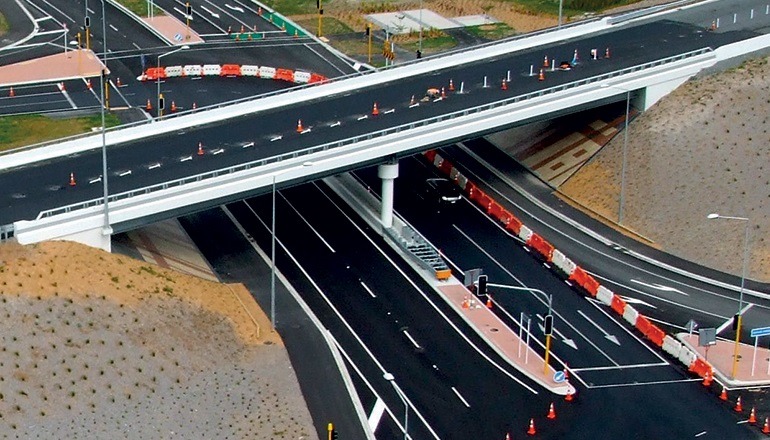DR BRYAN PIDWERBESKY, Fulton Hogan’s resident pavement and surfacing expert, reviews the country’s current approach to roading design.
DESIGNING AND CONSTRUCTING the country’s roads is a challenging and complex task with a whole host of factors demanding careful consideration.
The process is always a juggling act with health and safety elements, environmental factors, design costs, and construction costs all clamouring for undivided attention and optimal capital expenditure.
While these contending factors prompt trade-offs in the budget of the project, it is important to not lose sight of the bigger picture. The total life span of the road must be accounted for and, when this is considered, aspects such as the quality of the pavement design and materials become non-negotiable and should be optimised as much as possible.
While opting for lower cost pavements is appealing from a bottom-line standpoint, it ultimately means a shorter life span for the road and any up-front savings are offset by long term costs. There is more maintenance and, consequently, more traffic delays. Lower cost materials or pavement types can also result in rougher roads, which mean higher fuel consumption. These unintended consequences are all absorbed by all road users.
As designers and contractors, we need to make sure that we are taking holistic views of our projects and that we see the importance of investing upfront to ensure greater quality of delivery and performance.
The SH 18 Hobsonville Deviation exemplifies the benefits of emphasising quality pavement. Working with the head contractor, our paving crews and technical team worked tirelessly to deliver New Zealand’s smoothest pavement. This smoothness combined with the design, which features several layers of structural asphalt, will greatly lengthen the life span of the road, meaning less maintenance and greater fuel efficiency.
Setting standards
I am energised by the new standards that are being ushered in through the Roads of National Significance (RoNS) programme. These projects have set a solid benchmark here in New Zealand and all facets of the project are required to be fully optimised.
The RoNS programme, which started in 2009, has paved the way for seven projects deemed to be urgent priorities within the State Highway system to be fast-tracked.
This programme is comprised of the Puhoi to Wellsford route, the Auckland Western Ring Route, the Auckland Victoria Park bottleneck, the Waikato Expressway, the Tauranga Eastern Corridor, the Wellington Northern Corridor, and various upgrades to Christchurch’s motorway network.
Fulton Hogan’s work on the first stage of the Christchurch Southern Motorway serves as a good example of how the trade-offs in projects can be properly addressed and of how high standards can be met.
The project was unique due to the fact that the NZTA required that the pavement design incorporate recycled crushed demolition concrete (RCC). The design and construction teams worked with the NZTA to deliver a robust pavement including a number of sustainability initiatives, such as the RCC in the pavement and 30 percent recycled asphalt in the structural mixes for the first time in a New Zealand highway, all while not compromising on the quality and life span of the road.
This is a win-win outcome, with added foresight boosting the life span of roads while lessening the environmental footprint during construction.
I’m looking forward to seeing more innovation and creative thinking as the RoNS programme continues to roll out nationwide.
Using engineering judgement
While robust standards like those of the RoNS are highly useful in improving delivery, they need to be accompanied by the use of engineering judgement in order to ensure the constructability of the design and achieve the required life cycle performance.
That is why it’s always important that our design team works closely throughout the project with the project managers and crews who will be constructing the roads. The design and optimisation stage, the construction stage and quality assurance testing all feature close collaboration between the parties in order to mitigate whatever issues arise and to ensure that the design adequately balances risk management, use of resources and project cost.
The Te Rapa section of the Waikato Expressway serves as an excellent example of collaboration between the project owner, the designer and the contractor. In an alliance contracting model, the NZTA, our pavement designers and the project delivery teams were united in their approach from the design stages right through to the completion of the road and the partnership resulted in a positive outcome for all parties involved.
This is best practice, whereby the designers have direct contact with the client, project delivery managers and construction crews to ensure that the designs are constructible and that adequate emphasis is being made on the investment in a quality pavement.
These collaborative approaches serve to deliver better quality and performance to our roads, helping to future-proof our infrastructure, connect our people and keep our economy moving.

